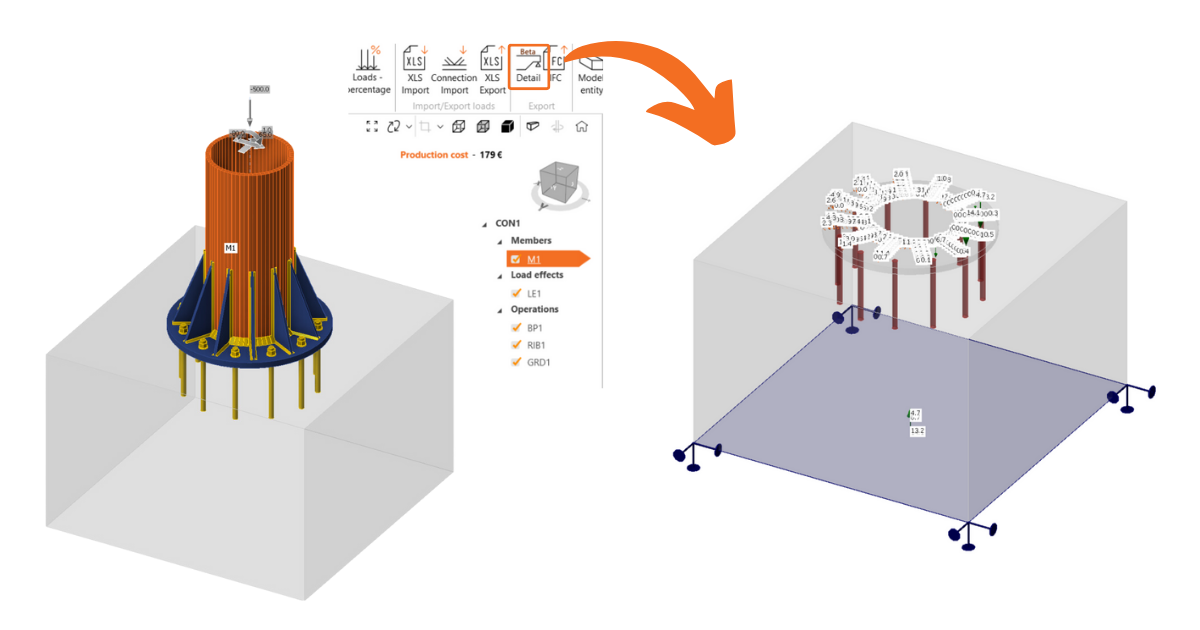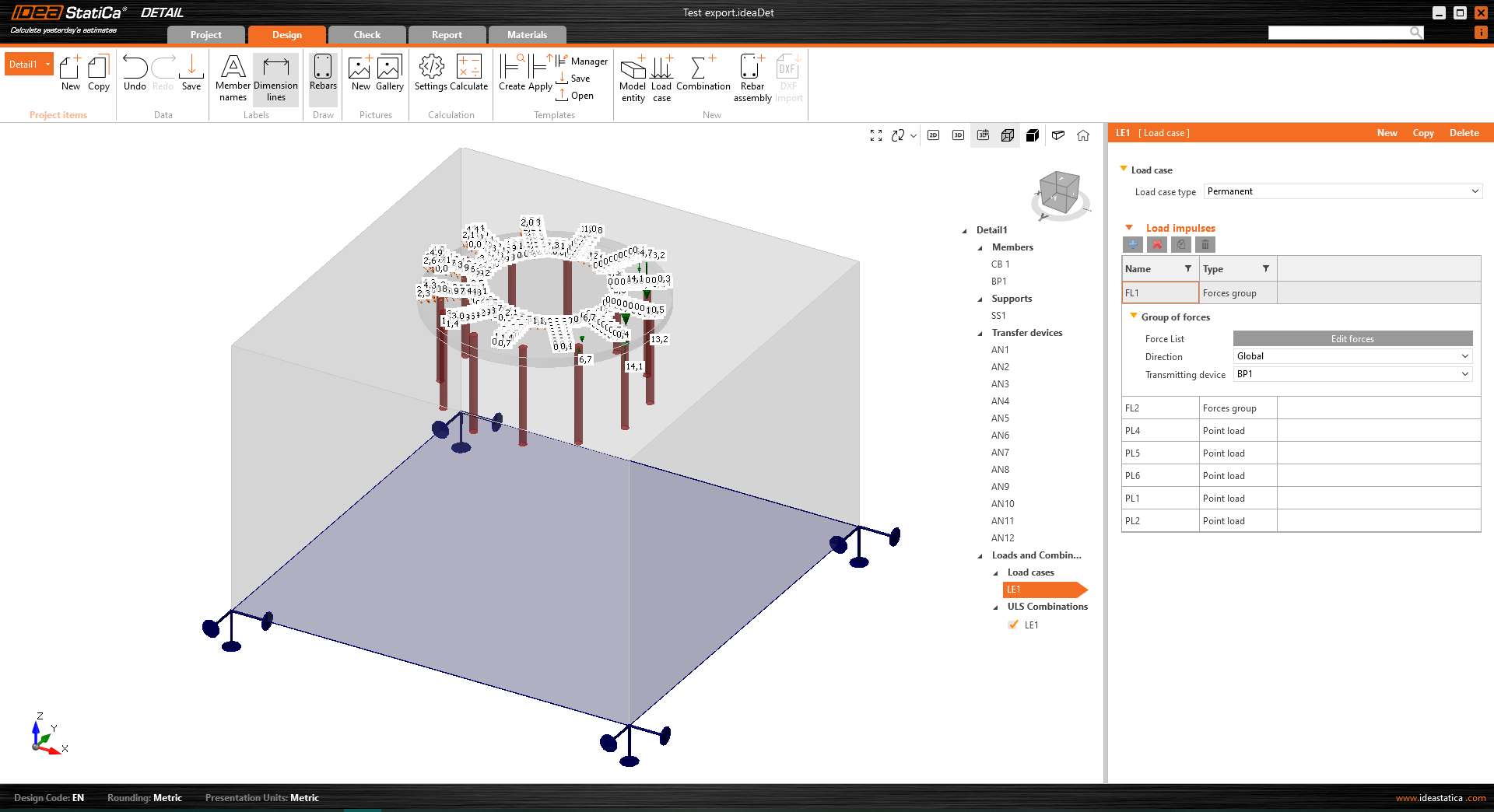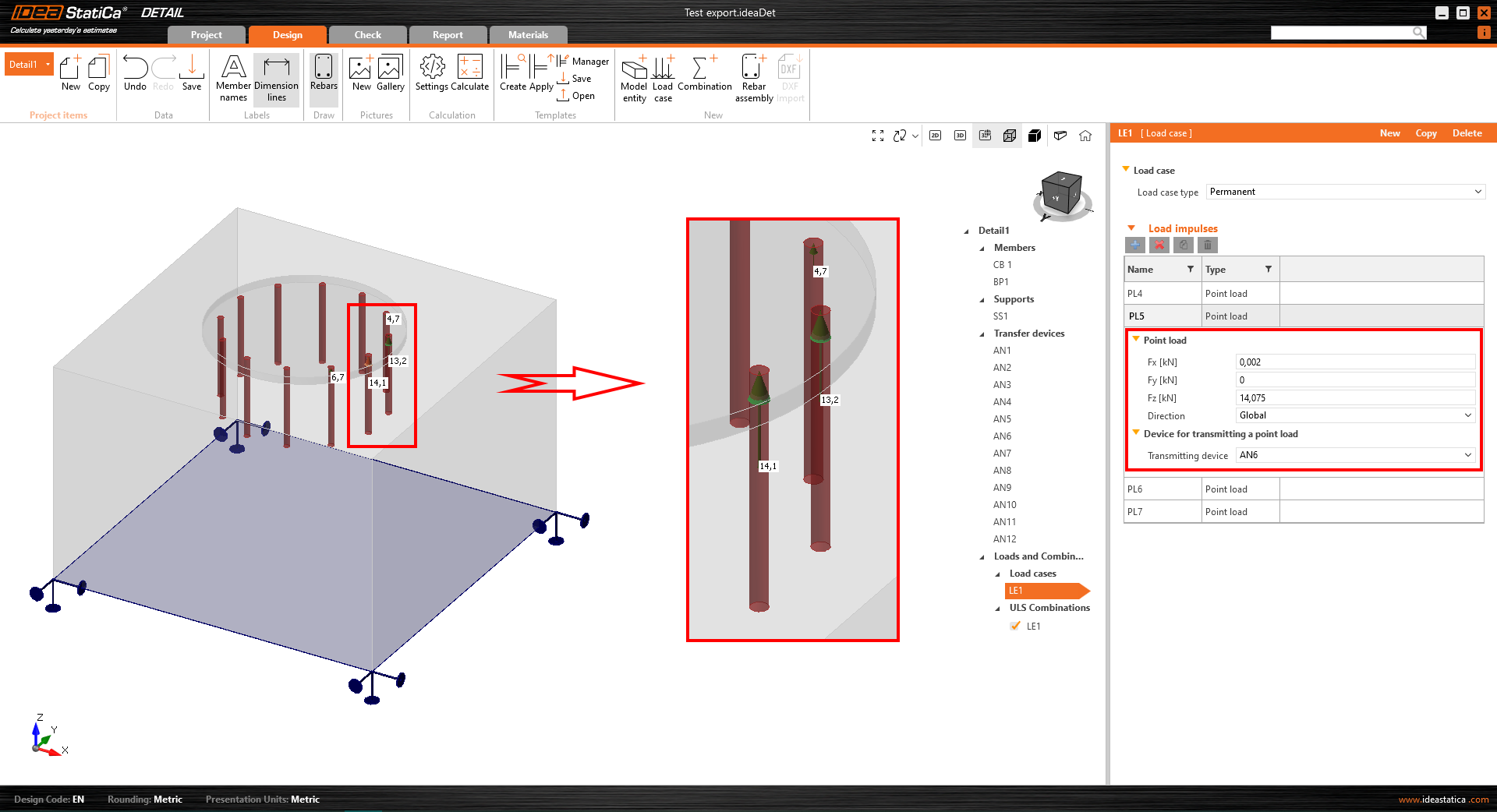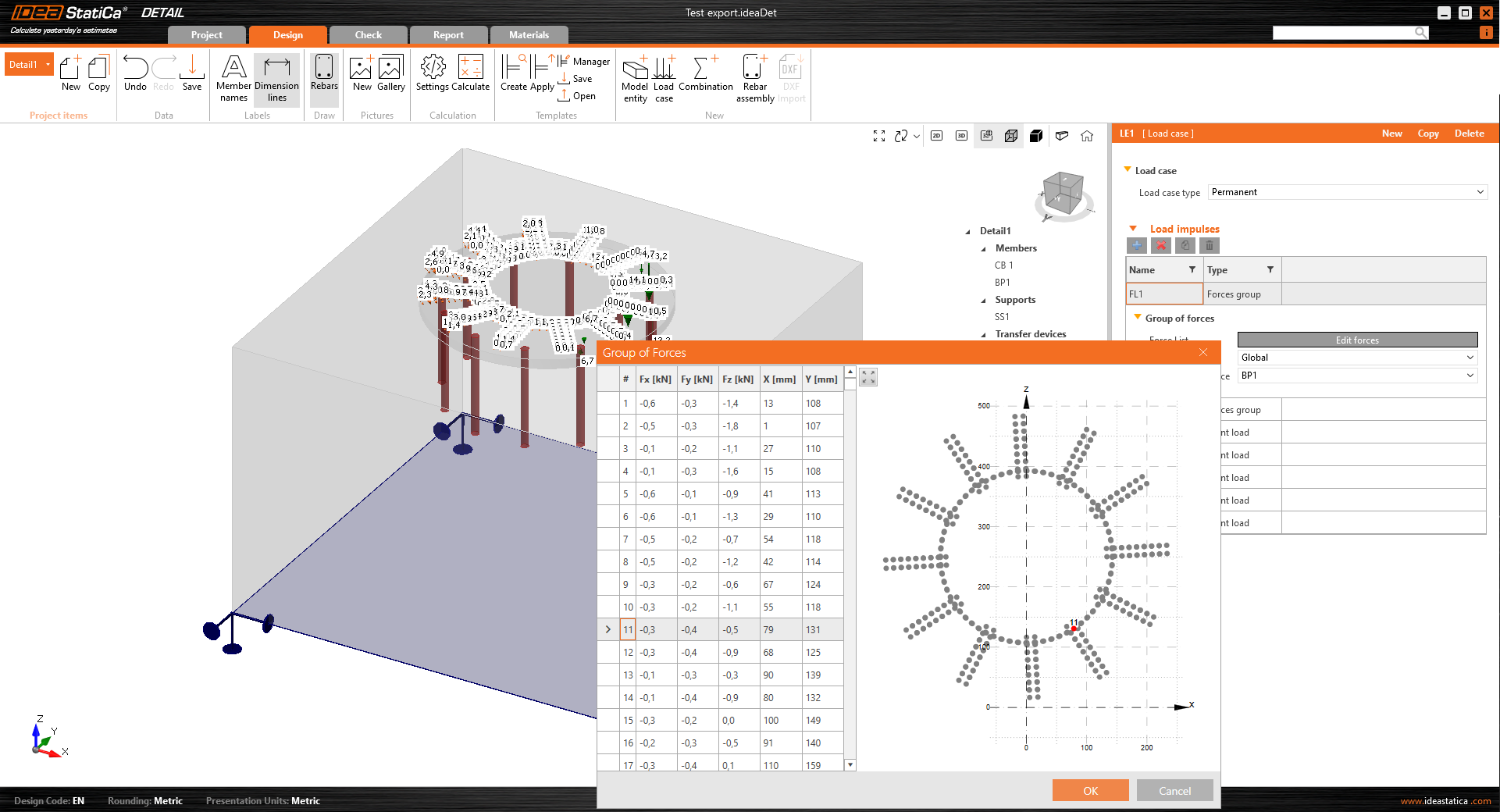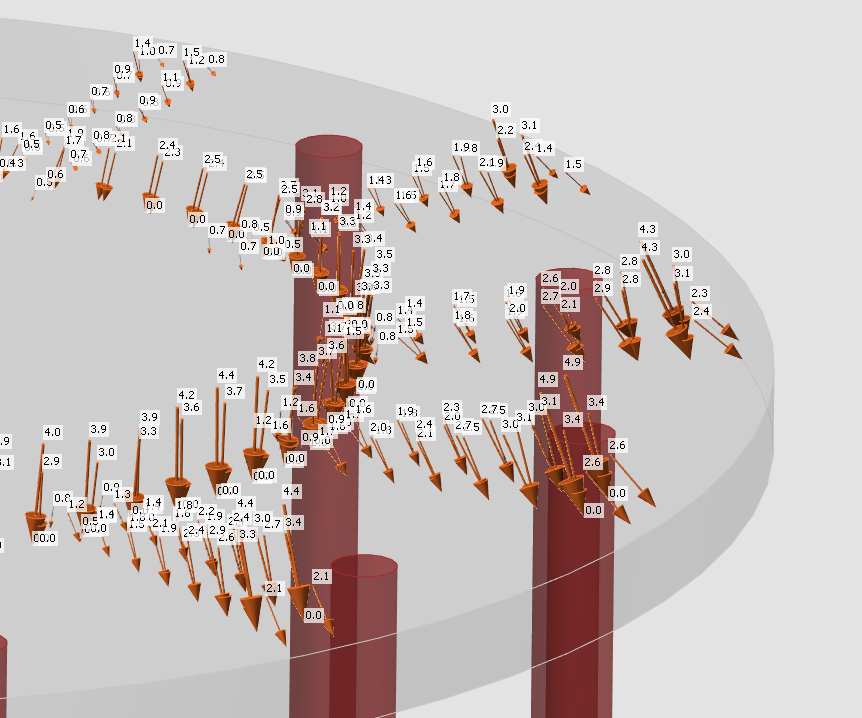Import of anchoring from Connection to Detail (BETA)
IDEA StatiCa 3D Detail has been out of the mode since version 24.1., see the updated article: RN 24.1: Import of anchoring from Connection to Detail.
Anchoring in a plain concrete block can be modeled and code-checked in IDEA StatiCa Connection. Sometimes it might be useful or necessary to reinforce the concrete block. Unfortunately, this capability isn't available within Connection.
However, with the development of 3D Detail (BETA), focused on anchoring into concrete blocks and analysis of both the anchoring elements and the concrete block itself, we have a solution. Moreover, a direct link is established between our Connection and Detail applications.
Connection users who design anchoring according to Eurocode can import their model from Connection to the advanced 3D Detail (BETA) by clicking one button.
How does it work?
- Import is allowed just for anchoring. If there is no concrete block in the model, the export to Detail button is disabled.
- The model in Connection has to be calculated. If results are not available, the export icon is disabled with the tooltip: "Results unavailable, calculate the model first"
- When the anchoring model has been calculated, the import button is enabled.
How to export anchoring from Connection to Detail?
First, create a model of anchoring in Connection according to Eurocode and click the Calculate button.
When results exist, export of footing is enabled. By clicking the button "Detail" in the ribbon, a dialog asking for the location and the name of the newly created Detail file appears.
After a successful export, the project in Detail is created. The geometry of the concrete block and the base plate, the position and properties of anchors, and the load are automatically transferred to Detail. Surface support placed at the bottom surface of the concrete block is automatically created.
The most tricky part of this process is the import of the load. For every calculated load effect in Connection, the corresponding load case and the ULS combination are automatically created in Detail.
- The base plate is loaded by forces in welds, which are modeled as a Group of forces.
- Anchors are modeled and loaded independently from the base plate, and they are axially loaded by point loads. The anchor transmits only compression and tension.
- Shear is transferred by friction between the concrete block and the base plate.
When the model is imported from Connection app, the loading impulses are created automatically. The loading of anchors is represented in the scene by a double of arrows in opposite direction.
- One arrow represents the tension force acting only on the top of the anchor.
- The other one represents the compression force acting on the base plate
For the loading of the base plate itself, the imported loading is represented by a group of forces following the stresses in welds between the base plate and steel members in the Connection model.
The only step left is to add reinforcement and calculate the model.
Note: Code-checks in the 3D Detail are currently for the Eurocode (EN) only.
More about 3D Detail as a solution for anchoring in concrete can be found in a separate release note.
If your license doesn't contain the Detail app, take the opportunity and get the free Detail testing module added with full functionality.
Released in IDEA StatiCa version 24.0.


